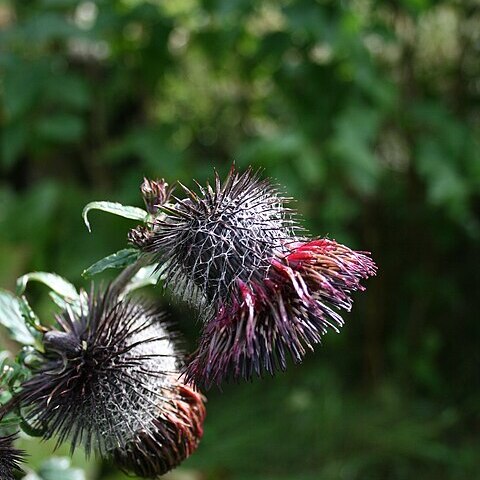Herbs 0.7-1.5 m tall. Rootstock stout. Stem solitary, stout, erect, ribbed, branched or unbranched, basally densely felted to glabrescent or glabrous. Leaves abaxially grayish white and densely felted, adaxially green, asperous, and setulose. Basal and lower cauline leaves with narrowly winged petiole to 34 cm; leaf blade cordate, ovate, broadly ovate, ovate-triangular, or hastate, 10-26 × 12-20 cm, base cordate, sagittate, or truncate. Upper cauline leaves gradually smaller upward, sessile or shortly petiolate, ovate, elliptic, or elliptic-lanceolate, margin toothed to spiny. Capitula several. Involucre 3-6 cm in diam., densely and fluffily cobwebby to glabrous. Phyllaries in 13-15 rows; outer and middle phyllaries lanceolate, 7-23 × 3-4 mm, patent to reflexed; inner phyllaries longest, linear-lanceolate, 2.3-2.5 × ca. 0.2 cm, sometimes purple. Corolla ca. 2.5 cm, tube ca. 9 mm. Achene brown, narrowly ellipsoid, ca. 7 mm, apex truncate. Pappus bristles brown, 1.5-2 cm. Fl. and fr. Jun-Oct. 2n = 26.
More
A herb. It grows 0.7-1.5 m tall. It has a stout rootstock. The stem occurs singly and is stout. It can be felted at the base and in ribbed. The leaves are grey and felted underneath. The lower leaves have narrowly winged leaf stalks 30 cm long. The leaves are oval or heart shaped and 10-26 cm long by 12-20 cm wide. Leaves higher up are smaller.

